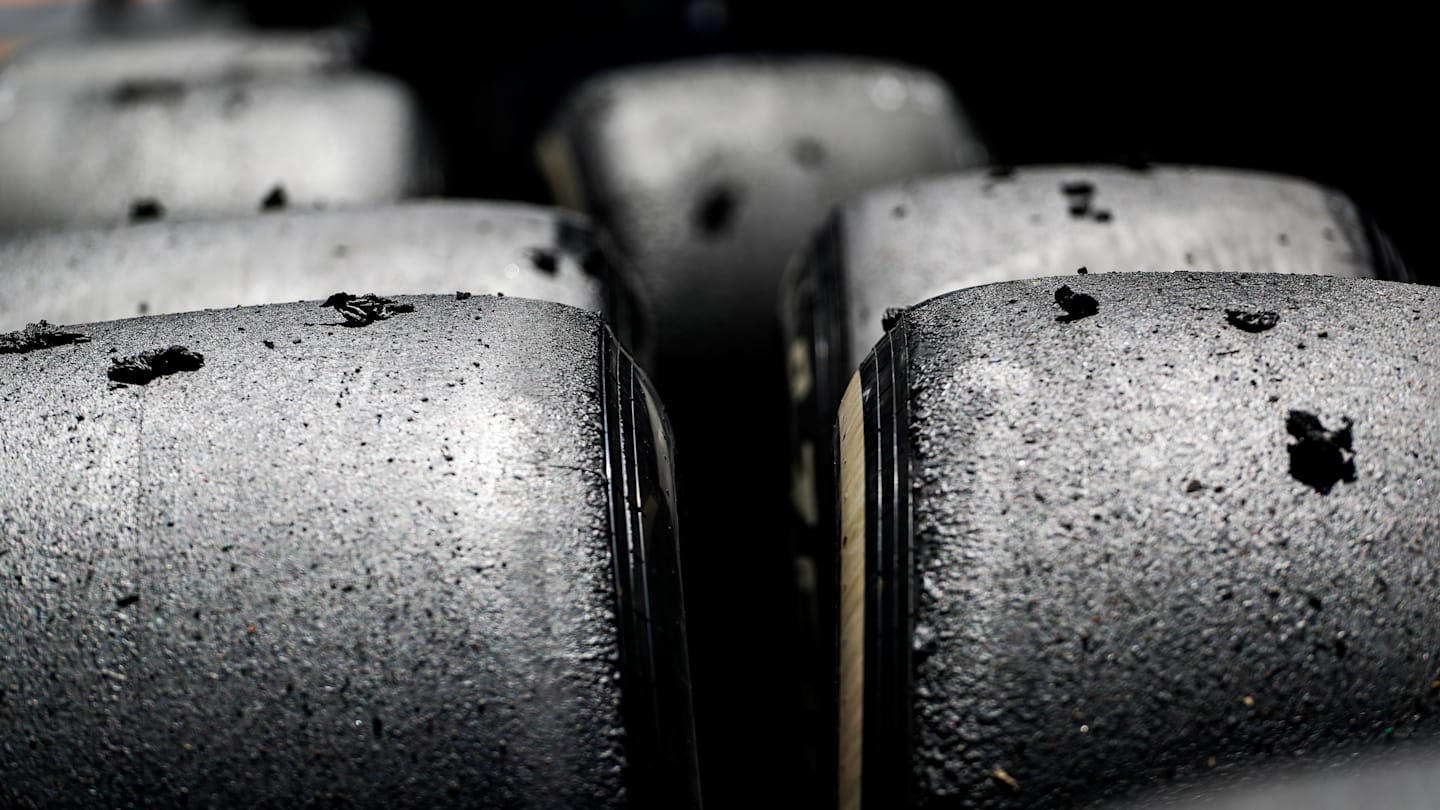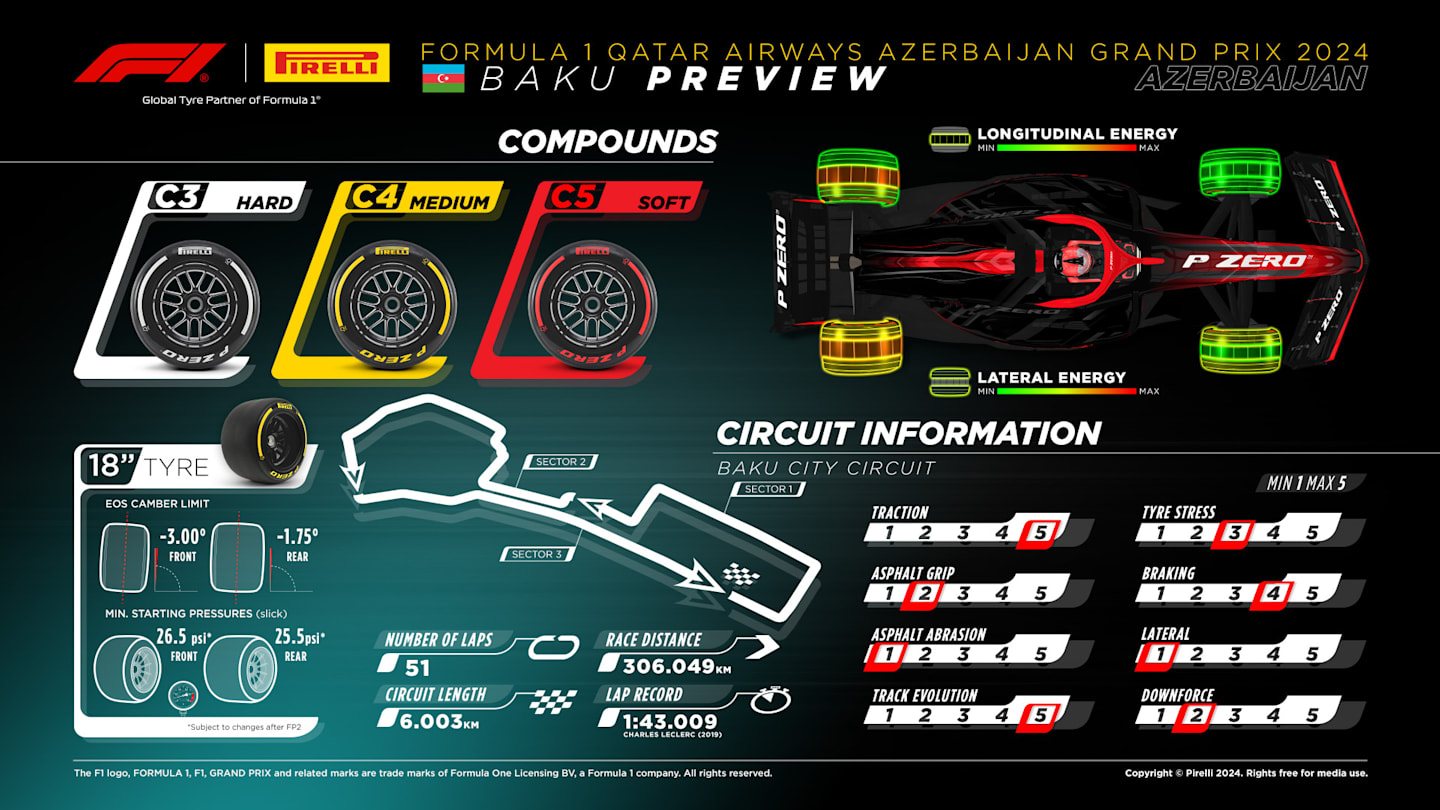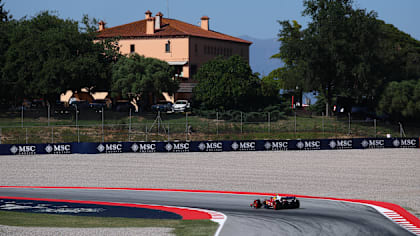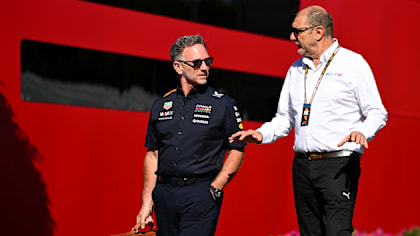
30 May - 01 June
News
What tyres will the teams and drivers have for the 2024 Azerbaijan Grand Prix?
Share

Formula 1 moves on to Baku for the Azerbaijan Grand Prix this weekend, with tyre supplier Pirelli bringing their three softest dry compounds to the venue – namely the C3 as the hard, the C4 as the medium and the C5 as the soft.
Drivers will get two sets of the hard tyre (marked white), three sets of the medium tyre (marked yellow), and eight sets of the soft tyre (marked red), as well as the green intermediate tyre and the blue full wets, should they be required.
“As the circuit is normally open to city traffic, track evolution will be an important factor to consider when evaluating performance, while the weather can also play its part,” reads Pirelli’s weekend preview.
“Usually, it is quite hot in September, with temperatures definitely higher than those experienced when the race was held in April. Furthermore, track temperature can vary significantly depending on which parts are in sunlight or in the shade from the surrounding buildings, especially in the section that runs through the old city.
“The wind can [also] upset the car’s handling and, coming from different directions, can catch the drivers unawares, as it is channelled by the surrounding buildings of the town.

“The high speeds reached on the main straight will put the tyres to the test, especially with the downforce generated by the current cars.
“With another section of track requiring the opposite aero set-up, the teams cannot opt to run too low a downforce level as they would then suffer in the slowest part of the track, where they will rely on tyre-generated grip to get the most out of the car.
“When it comes to strategy, Baku is a typical one-stop race with the hardest tyre doing most of the work. In 2023, almost all drivers started the race on the medium before switching to the hard when the Safety Car came out on Lap 11.
“Although a glance at the circuit layout might lead one to believe that overtaking is relatively straightforward, that is not at all the case.
“Given the hierarchy of the teams this year, with the performance differences within the two main groups being minimal, the effectiveness of DRS could play an important role, as will a team’s ability to react to the unexpected on a track where the chances of the race being neutralised are very high.”
For more information about Pirelli’s F1 tyres, visit pirelli.com.
YOU MIGHT ALSO LIKE

Video WATCH: Ride along with Piastri for the fastest Friday lap in Spain
Live Blog AS IT HAPPENED: Follow all the action from second practice for the Spanish Grand Prix
Report FP2: Piastri tops the timesheets ahead of Russell and Verstappen during second practice in Spain
News Horner pledges ‘100% commitment’ to Red Bull amid rumours of Ferrari approach for team boss role







